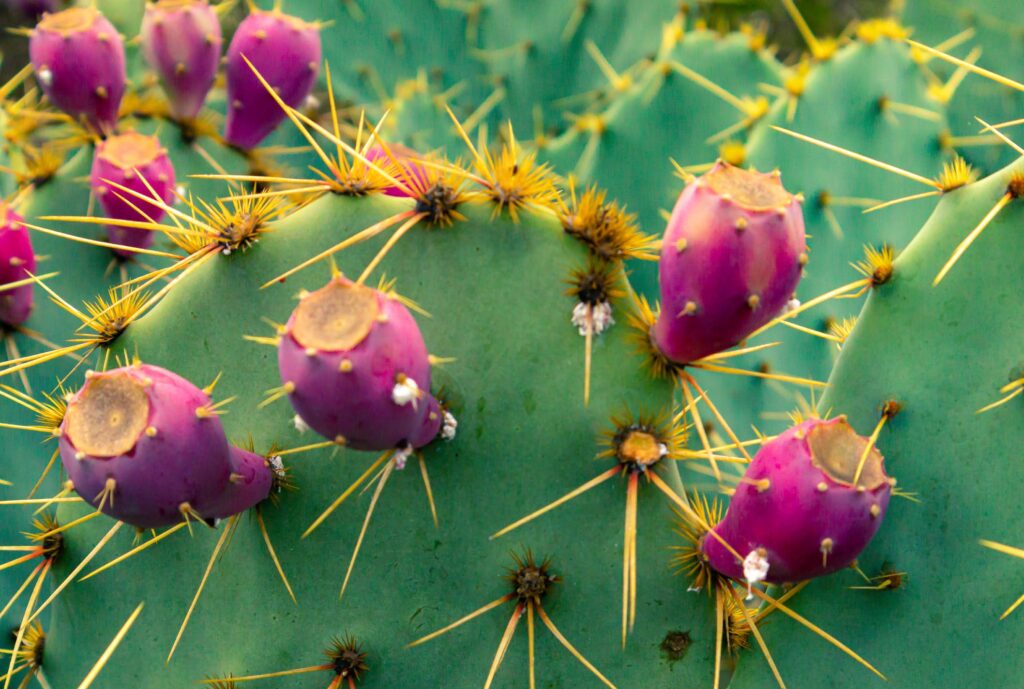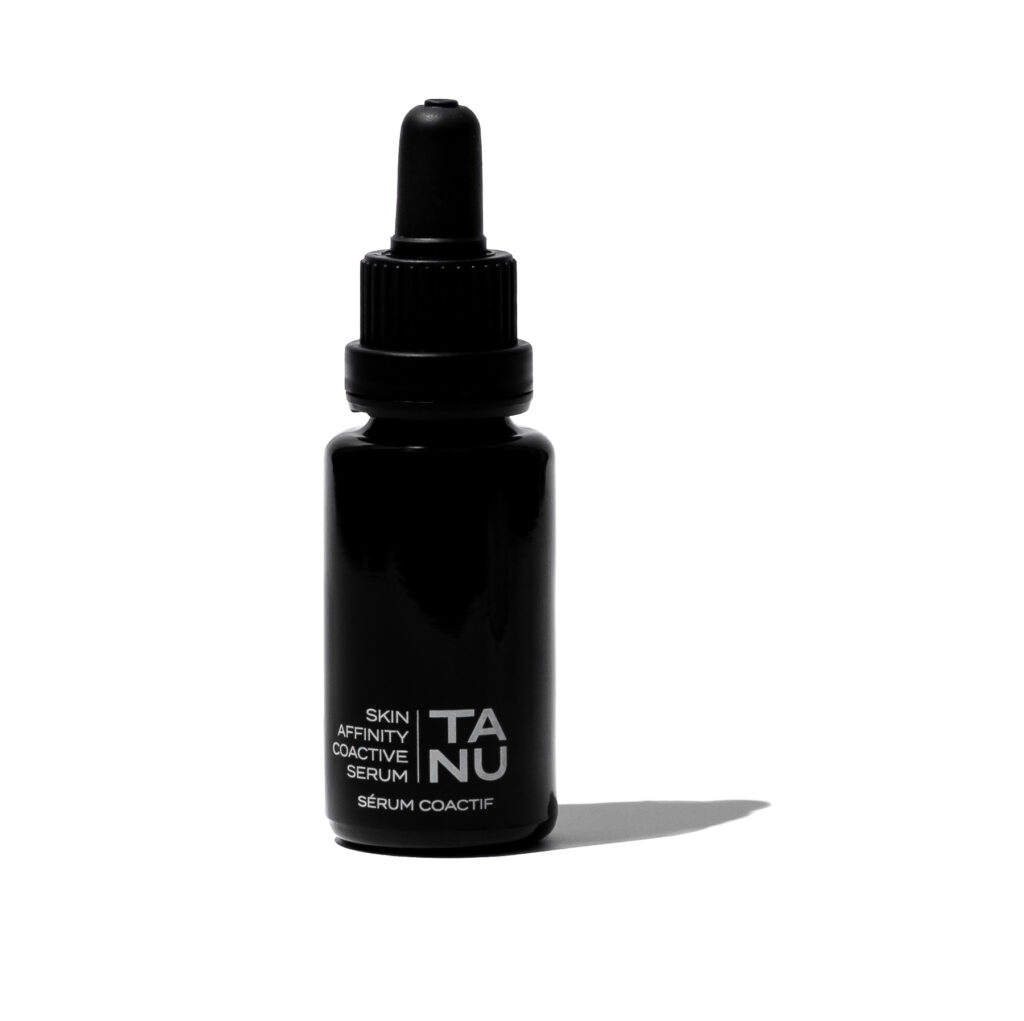Opuntia ficus-indica is a species of cactus that has long been a domesticated crop plant important in agricultural economies throughout arid and semiarid parts of the world. Known as Prickly Pear or Barbary fig, this is the ‘Holy Grail’ in the world of facial oils, with Argan being its first cousin. The extraction process is a very time-consuming and laborious procedure.
The production of 1 litre takes 36 hours of manual labour, and 1 million seeds are needed. Cold-pressing ensures no chemicals are added during the extraction process. This process avoids the use of heat, which damages the active plant compounds, this is one of the most expensive oils in the world, making prickly pear the holy grail of facial oils.
Many live in extremely dry environments, cacti show many adaptations to conserve water. Almost all are succulents, meaning they have thickened, fleshy parts adapted to store water. Many species have lost true leaves, retaining only spines. As well as defending against herbivores, spines help prevent water loss by reducing airflow close to the cactus and providing some shade, and enlarged stems carry out photosynthesis.

Why is Prickly Pear Seed Oil good for your skin?
Vitamins, Antioxidants, Essential Fatty Acids, and Sources of Bioactive Compounds and large doses of them, offer the following skin benefits: soothing, moisturising, and reducing inflammation that damages collagen.
Let’s take a closer look at a breakdown of the different compounds:
- Essential fatty acids (EFA) 88%. These compounds plump the skin, reducing wrinkles and adding firmness.
- Omega 6 fatty acid. This strengthens and smooths the skin’s surface, repair the skin barrier to improve moisture and elasticity while soothing irritated, sensitive and red skin.
- Linoleic acid – Stimulates healthy cell production and turnover.
MINERALS
Calcium – Regulates skin cell production and repair.
Potassium – Protects against dehydration.
Phosphorus – Is important for the nervous system as it is used to produce phospholipids, which are an essential component of cell membranes and play an important role in signal transmission in neurons.
Magnesium – Maintains moisture levels.
Sodium – Protects and prevents water loss and facilitate macrophage-driven antimicrobial defence.
Zinc – Reduces redness and inflammation of acne lesions and decrease oil production.
AMINO ACIDS
Prickly pear oil is rich in amino acids, which stimulate collagen production to help refine, brighten, and tone skin.
Phenylalanine – Slows down melanin transfer helping to promote an even skin tone.
Amino Acids – Glutamic, Asparagine, Leucine, Serine, Lysine, Arginine, Valine, Phenylalanine, Glycine, Alanine, Tyrosine, Histidine and isoleucine.
VITAMINS
Vitamin E is rich in tocopherols (720 mg/litre). The term tocopherol is a generic name for at least eight chemically similar structured compounds. Prickly pear seed oil consists of: Alpha 9%, Gamma 9%, Beta 3% and Delta 2%.
It provides protection and helps skin retain moisture is a free radical scavenger and increases cell renewal. Vitamin E is a general term for a group of sixteen liposoluble chemical compounds, which differ in their strength of efficacy. Those compounds also include all tocopherols alpha, beta and gamma tocopherols.
Vitamin K1 – Aids the skin by evening out skin tone and reduces the appearance of spider veins and broken skin capillaries.
ANTIOXIDANTS
Tocopherols are responsible for the impressive effectiveness of prickly pear seed oil as a natural antioxidant. They protect all valuable unsaturated fatty acids against the destruction of free radicals, which are known to promote the skin aging process.
Polyphenols – Anti-inflammatory, and anti-carcinogenic properties, but they also fight oxidative stress—an imbalance between free radical production and the body’s ability to defend against them. Like tocopherols, they are also free radical scavengers. Polyphenols prevent and treat sun damage, and can help with redness and irritation.
Flavonoids – Exhibiting anti-inflammatory properties are a diverse group of plant pigments. These substances are responsible for the colour of many fruits, vegetables, and flowers. In addition to providing the colour that attracts insects or animals, these pigments protect plants from environmental stress.
Tannins – These plant polyphenols protect against free radical damage caused by exposure to UV light and, in turn, reduce the risk of skin cancer and premature aging.
FREE RADICALS ORIGINATE FROM:
- Cigarette smoke – Includes passive smoking
- Environmental poisons and ionized radiation – Televisions, computers, mobile phones, ultraviolet rays, smog and ozone
- Alcohol, drugs and physical strain.
Phytochemicals
Anti-inflammatory – Phytochemicals, namely plant sterols, and flavonoids that have an anti-inflammatory action helping to reduce inflammation that damages collagen.
Phytosterols – Similar to cholesterol, as they bind to water. Applied topically, they help the skin retain moisture, strengthening the barrier. They also assist in collagen production. A German study noted the phytosterols abundant in prickly pear seed oil encourage new collagen production. This revolutionary discovery indicates that it can improve the skin’s vitality over time, despite the natural aging process.
CONCLUSION
Prickly Pear is the holy grail of facial oils, we uncompromisingly use only the Certified Organic version sourced directly from a sustainable, family-owned and operated co-op in Morocco. This directly supports a local community of women. The first ingredient in TANU Skin Affinity Coactive Serum is Prickly Pear Seed Oil. Sustainable, Luxurious, Skincare is what we do!
Until next time be human, be kind, be you.


REFERENCES:
- Prickly Pear Seed Oil and the Skin – Billie A. Leyendecker:
Aromatic Scholars Program Graduate with The School for Aromatic Studies
https://aromaticstudies.com/prickly-pear-seed-oil/ - Ramadan, M.F., & Morsel, J.T. (2003). Oil cactus pear (Opuntia ficus-indica L.). Food Chemistry 82(3), 339-345.
- Moβhammer, M.R., Stintzing, F.C., & Carle, R. (2006). Cactus Pear Fruits (Opuntia spp.): A review of processing technologies and current uses. Journal of the Professional Association for Cactus Development, 8, 1-25.
https://www.omicsonline.org/open-access/cactus-opuntia-ficusindica-a-review-on-its-antioxidants-properties-2329-6836.1000153.pdf - Cactus
https://en.wikipedia.org/wiki/Cactus
Comments +